5.18 Workers
You will need to set up at least one Retain Worker. The Retain Worker does the actual work of collecting the data from a message system and delivering it to the Retain Server. The Retain Worker component is normally installed local to each GroupWise mail server, or any Exchange server from which you wish to collect data.
Although a Worker may be installed on a machine running Retain Server, this is normally not recommended or sufficient, except for very small (100 or fewer users) systems or for evaluation purposes.
Ideally, the worker you choose to dredge mail from a desired server is local to the server itself. Using a worker on Server A to pull data from a mailbox server on Server B is possible, but it will use up network bandwidth and will be slower than simply pulling data locally. For this reason, Retain was designed to allow you as many workers as you need, on Linux or Windows.
5.18.1 Worker Configuration Options
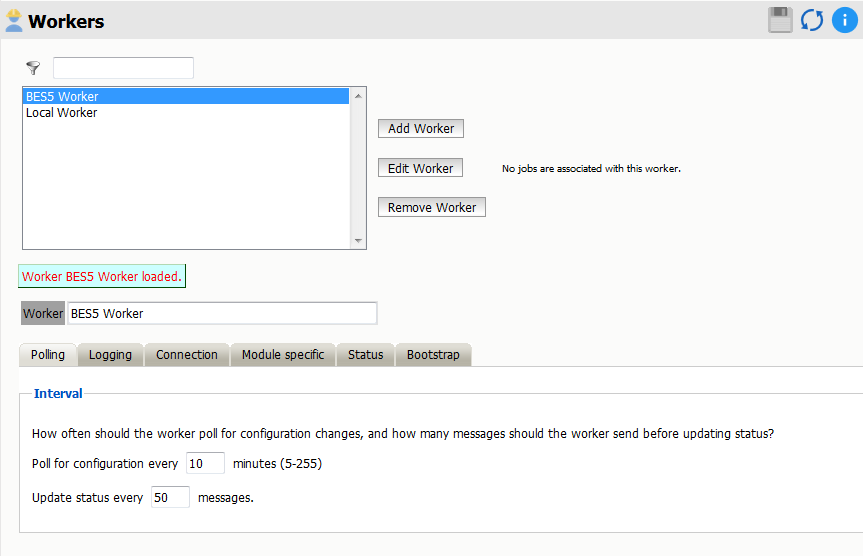
-
Polling: Defines how often the worker polls for configuration changes. (Jobs, job changes, etc.)
-
Default is 10 minutes.
-
Default is to update the displayed status every 500 messages while running the job.
-
-
Logging – Controls logging by the Retain Worker.
-
Default is normal.
-
-
Connection. Important. This is the information the worker needs to connect to the Server. Double check this setting.
-
Protocol
-
URL/host name
-
password
-
If the connection information is changed, you will need to manually copy the Retain Worker.cfg bootstrap file over to the Worker
-
Correcting or recopying the Bootstrap:
-
Stop Tomcat.
-
First delete the Retain Worker.cfg file on the Worker machine. For security reasons, there is no way to do this except by manually deleting the file from the server console itself. The path is: Retain Worker/WEB-INF/cfg. Removing the bootstrap resets the worker to initial configuration.
-
Restart and re-upload the bootstrap to the worker.
-
-
-
Module specific– Depends on the module(s) installed and allows the worker to be pointed at a particular post office server.
-
Status – Basic status information on the Worker. This status information is updated while the worker is running according to the “Update Status” interval described above.
-
Bootstrap – Indicates the download link and when it was last downloaded.
5.18.2 Worker Configuration
From the Retain home page, click Workers. You will see this screen:
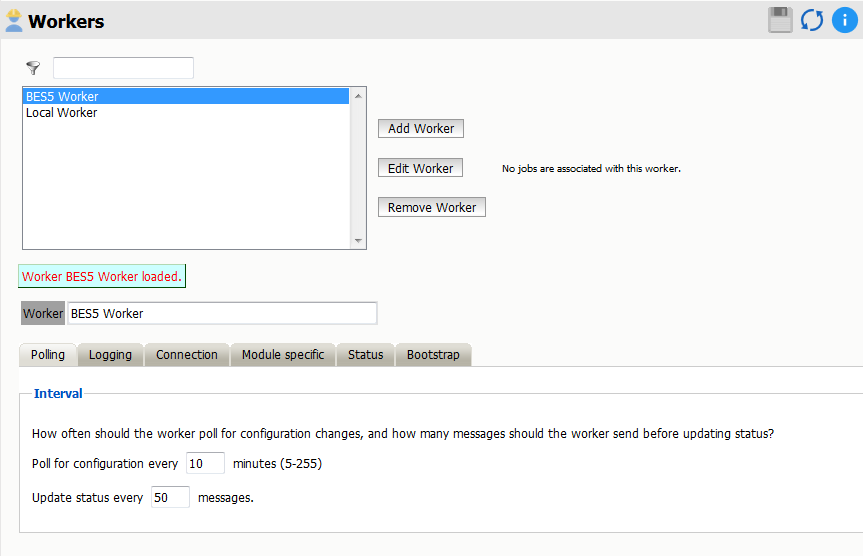
-
Click “Add Worker”.
-
Put the name of the worker in the “Worker box”.
-
Example: Linux Worker 1.
-
Check the Connections Tab to be sure the Retain Server IP address settings are correct. This tells the Worker where the Retain Server is located. (Server Host Name or IP address must be correct; this should be populated automatically, but double check for accuracy.) The Server Connection setting must be able to resolve to the Retain Server if placed in a browser address bar.
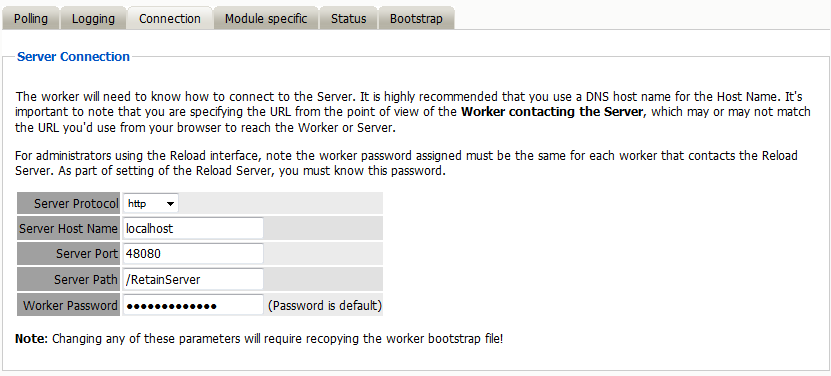
The Connection tab holds very important contact information for the worker’s connection to the Retain Server and the Post Office. Make sure that the Retain Server connection address is correct, or the Retain Worker will not be able to talk to the server.
Double check all these settings to ensure that you will have the best performance and connection for your system.
Important Note: It is vitally important that the connection information is correct before you save the worker. On a single server system, it is easy enough – it’s the same server. However, in an enterprise setting where you might be using different components on different servers, it is extremely important that each component knows how to connect to the Retain Server.
If you do not set this correctly, the Retain Worker will not be able to contact the Retain Server and it will not run jobs.
-
The Module Specific tab contains information specific to individually configured modules. With Exchange, you may optionally specify a specific Active Directory Site the worker is located in. That allows Retain to find the “closest” Exchange Server that is appropriate for the user to be archived. The settings specified here are tied only to the specific worker configured, and does not affect the rest of the system. In general this setting may be ignored unless required. If required, input the appropriate information.
-
Message Router. The message router settings must be set on the message router worker to reflect where the data path is for the Message Router. This path must be specified from the worker’s point of view. If the worker is not local to the router, then the path must be fully accessible to the worker; direct file access is required. You may specify how long to keep files in this location. Default is shown.
NOTE:If REST is being utilized, do not configure the Message Router section. The Message Router will default to REST if this is not configured.
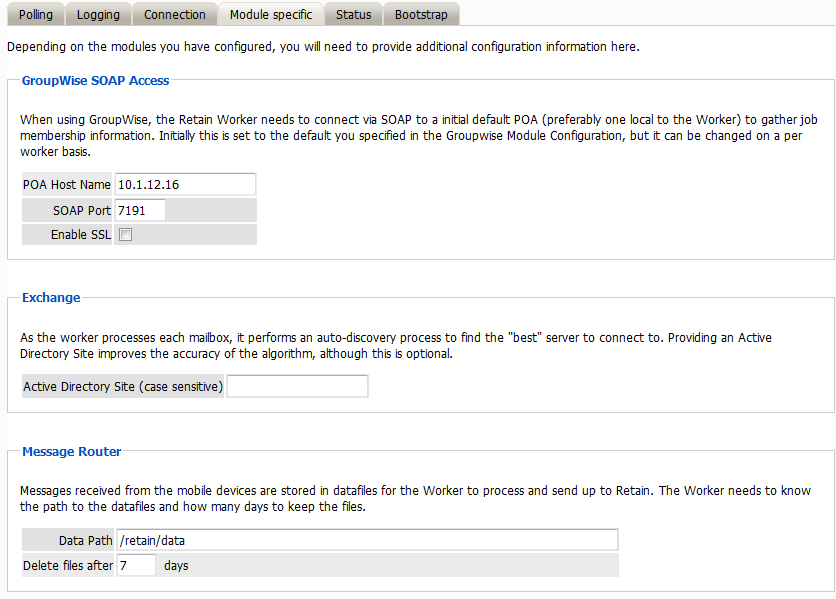
-
After you have checked and set your settings, click “Save Changes” before browsing to another page to finish creating and to save your worker.
After the worker has been saved, two additional tabs become visible for settings on the worker. You MUST save changes on a newly created worker before the ‘Bootstrap’ tab is available to be used. The status tab for the new worker will not hold any pertinent information until a job has been run or the worker has registered to the server and is in communication. Once a job has been completed, information will be displayed on the general status of the selected Worker.
Check this page after the worker has completed connecting to the Server for information and jobs. After a job has been run, or is running, more pertinent information, such as total mailboxes scanned and messages stored, will be displayed.
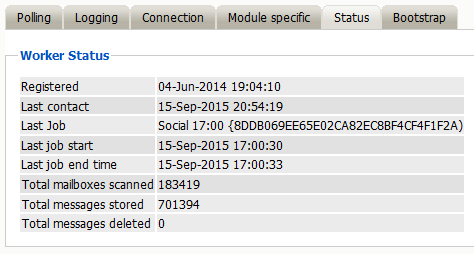
-
After you have saved the changes, the Bootstrap tab appears (see below). Click “Download File” to save the configuration to a local workstation.

-
Save this file to your hard drive in a place where you can find it. Click “Save”.
-
Open a new browser window and type:
http://< your-RetainWorker-ip >/RetainWorker
The upload screen appears when a worker has not been initialized.
-
Upload the bootstrap file.
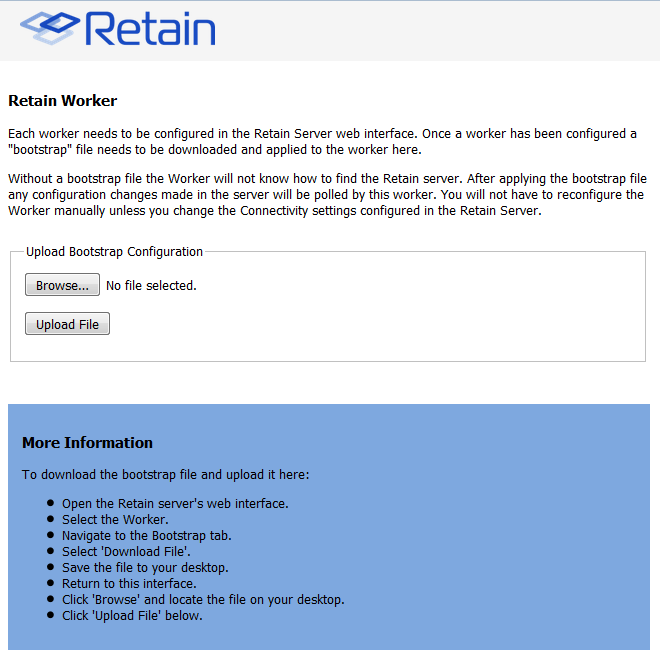
-
Click “Browse” to find the file you just downloaded, and select it.
-
Click “Open”.
-
Click “Upload File”.
-
If the upload went well, you will see this screen:

After you click the “Continue” button, you will be returned to the login page.
-
Login as Admin.
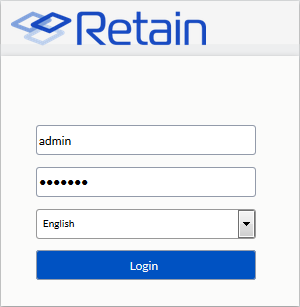
On all subsequent logins, you should be shown the configuration page first.
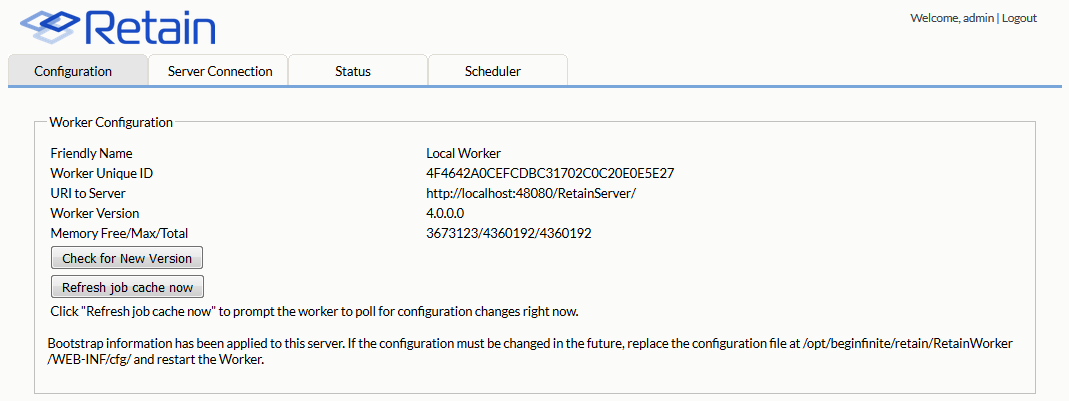
You should be able to see your configuration on the screen, as shown. The “Check for New Version” button checks for updates. The “Refresh job cache now” button tells the worker to poll the server for configuration changes and new jobs. After this button is selected, the Worker page will refresh automatically after the Retain Server has been polled. It takes just a few seconds.
-
Verify the Retain Server connection success by selecting the Server Connection tab.

-
Go back to the Retain Server.
-
Click “Workers”.
-
Click on the worker you just created.
You should see the following:
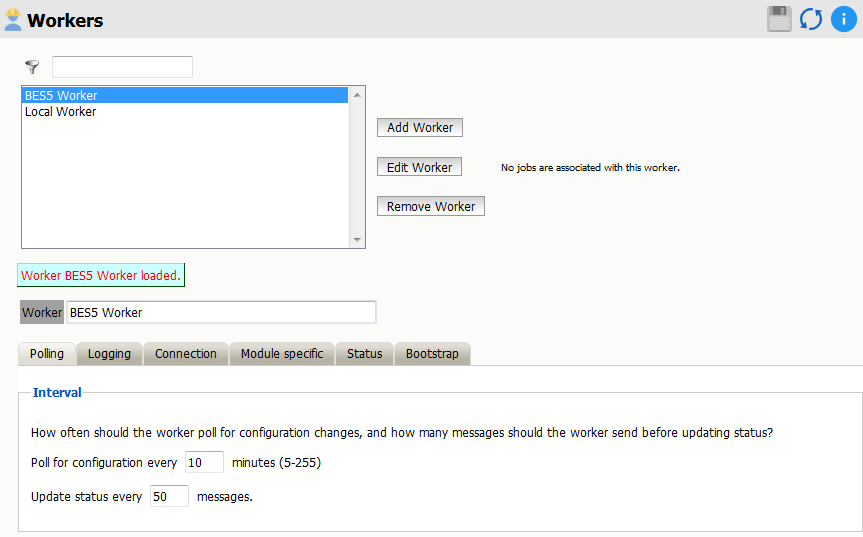
Pay close attention to “Poll for configuration every ‘n’ minutes. This is how often Retain will check for new jobs.
Also, status updates are displayed on the admin page every ‘n’ messages.
Now, set logging to a level you would like. “Diagnostic” writes extensive amounts of data to the logs. If using this level, only use it until satisfied that the system is fully operational. Please be aware, however, that using this setting will write a huge amount of data in the log files.
The profiles, schedules, and jobs must be setup, if they already have not been, in order to begin actual data collection.